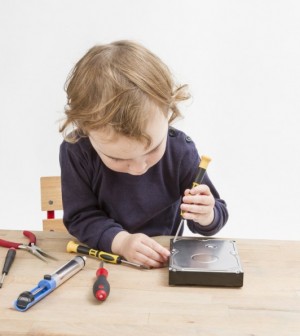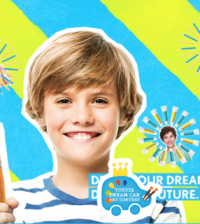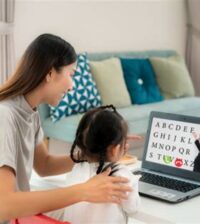- Belgium comes to Yamashita Park
- Residential Villa in Phuket Entices Remote Workers With Long-Stay Rates
- Rare pieces of French glass art at the Mirai Museum of Art
- Feast on fresh fish and seafood at the 2024 ‘Sakana’ Festival
- Would you like to ride in a Louis Vuitton gondola lift?
- Naked Snow Aquarium
- Festive lights at Yomiuriland will get you feeling the holiday vibes
Why Socio-Technological Literacy Matters Today

As a parent, I’ve been thinking about the education options out there for my child and his future in the choices I am making today.
Most people can drive a motor vehicle. However, if all the parts were laid out on a table, most, if not all, would not know how to assemble it. The ability to “drive or operate” the car is knowledge by application. However, knowing what it takes to fix a smoke-belching car to promote clean air is technology literacy.
Parents face new decisions in educating digital natives today as technology literacy becomes increasingly important in the 21st century. If you are, like me, assessing practical learning and the development of your child’s mind in his formative years, would you not be concerned about where classrooms are taking our kids?
In the pre-computer age, reading, speaking and writing were central to being literate. All that changed with technology. This does not mean that children today do not need reading or writing skills. Language still plays an important role in communications.
But what really is technology literacy? socio-technology? Only a few parents and educators understand its real meaning. Technology literacy as defined by the International Technology and Engineering Educators Association (ITEEA) is one’s ability to use, manage, evaluate, and understand technology. Being technologically literate happens long before a child begins to use computers. Computers are just one of the range of tools available with which they will gradually develop a relationship over time. Our generation has completely become reliant on technology. Many people can operate a computer yet not many have skills for how technology impacts the environment and society as a whole.
“Socio-technology,” on the other hand, “is the convergence of technology and social insights in the creation, construction and use of artifacts,” according to Science and Technology teacher Nicole Radziwill. Thus, ITEEA suggests that technology education should be a part of every Grades K-12 students’ curriculum in schools.
“For example, we typically build a bridge when there’s some expectation that people need to get from Point A to Point B, and there’s something they need to bypass along the way (e.g. a river, a canyon, another road). Failure to consider the social factors as well as the technical factors could lead to a “bridge to nowhere” – and we all know at least one person who’s had a problem with those. Non-technical factors pertaining to the environment in which an idea is created and implemented are crucial.
Although language and literacy are both core life skills, they are not the same. According to the Australasian Journal of Early Childhood, “language is what one needs in acquiring literacy. Teaching literacy demands a deeper learning of unconscious skills and cognitive development to occur alongside instrumental skills development in order to promote the kind of high-quality engagement which is required as children move into the more formal years of education.”
In 2008, Google engineers estimate the number of unique website address to be 1 trillion with the world wide web growing in several billion pages per day. The rise in popularity of social media has given birth to a digital community of bloggers, podcasters, YouTubers, facebookers, instagrammers, and etc. What this means is that people are no longer just consumers of content, information, etc. The participatory culture on the internet has now made everyone content creators, communicators and social producers.
The Alliance for Childhood, a non-profit organisation promoting policies and practices that support children’s healthy learning development narrows down the main aspects to achieving sophisticated technological literacy into three:
1) Knowing how to use or operate particular tools
2) Understanding, at least in a rudimentary way, how they work
3) Developing the capacity to think critically, for one’s self, about the entire realm of designing, using, and adapting technologies to serve personal, social, and ecological goals in ways that will sustain life on Earth.
Juan Gonzalez, founder of FabSpaces, a technology firm in America that runs successful workshops for kids, says, “When kids are creators, when they make to learn, they learn more than where they simply consume digital media.”
At one of their workshops, children learn technology by creating a simple origami cube using magnets, transistors and LED lights.
Essentially, from the simplest to the most complex, digital natives will work and will be working with technology that will have greater impact than what the old school offered.
“Digital wizard skills are not that simple for kids to grasp. And so you need to make a method that’s more approachable for them. The moment you have kids engaged into building, making, assembling things with their hands, their attention, their focus, the way they perceive learning changes dramatically. And so it’s a lot easier to use experience using, building, moving things around to create analogy for how the digital world works.
And so through the origami cubes, we created an interesting analogy where the internet, the (IoT) internet of things is really a connection of different tools. By creating many cubes and connecting them, we give the kids a very tangible principle and create a mental model.
Tony Wagner, founder, co-director of the Change Leadership Group at the Harvard Graduate School of Education and author of bestseller “Creating Innovators” argues that the education system must “focus more on skills and not content to develop a culture of learning that would promote 21st century skills.
The global competition is real. The pathways that today’s schools open to our children will become important in the kind of literacy needed to compete globally.












